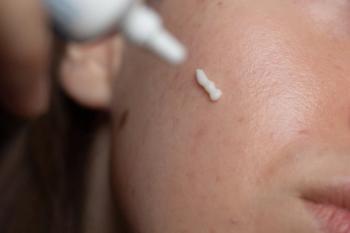
Del Rosso Highlights Next-Gen Treatments
Key Takeaways
- Tirbanibulin 1% ointment is FDA-approved for actinic keratosis as a field therapy, treating up to 100 cm² of skin.
- Biologics for atopic dermatitis, like tralokinumab and lebrikizumab, offer alternatives for patients with adverse effects from dupilumab.
At the Fall Clinical PA/NP 2025 meeting, James Del Rosso, DO, spoke about recently approved therapies like JAKis for alopecia, biologics for AD, and tirbanibulin for AKs.
At the Fall Clinical PA/NP 2025 meeting, James Del Rosso, DO, presented his annual session, “What’s New in the Medicine Chest,” highlighting recently approved therapies and clinical updates in dermatology. Known for his practical overviews of therapeutic developments, Del Rosso focused on a few key disease states—some that have been under-discussed despite their prevalence.
Topical Tirbanibulin: A Field Treatment for Actinic Keratosis
Among the updates, Del Rosso emphasized tirbanibulin 1% ointment (Klisyri; Almirall), a topical treatment for actinic keratosis (AK) that received FDA approval as a field therapy—a significant evolution in how AK is managed.
“So we do have a therapy, topical tirbanibulin 1% ointment... that’s applied once a day for 5 days,” he explained. “But the newest FDA approval... there's a larger quantity that's available in a packet... and it's approved for a total field treatment.”
This expanded use allows treatment of up to 100 cm² of affected skin on the face or scalp. The field therapy approach targets both visible and subclinical lesions. “It’s like putting down weed killer to stop the weeds from coming out, in addition to getting rid of the weeds that you can see,” he said. The product is associated with relatively mild inflammation compared to other topical AK treatments, typically resolving within 2 to 3 weeks.
Biologics in Atopic Dermatitis: Not All Are the Same
Del Rosso also addressed the growing class of biologic agents for atopic dermatitis. While dupilumab (Dupixent; Sanofi and Regeneron Pharmaceuticals) remains a mainstay due to its dual IL-4 and IL-13 inhibition, he stressed the importance of understanding differences between agents, especially for patients experiencing adverse effects.
“Even though dupilumab inhibits IL-4 and IL-13, if a patient has a problem with dupilumab—let’s say they develop conjunctivitis or blepharitis or maybe arthralgias—you would think, well, I’m not going to give them an anti–IL-13. That’sprobably going to do the same thing. Well, the fact of the matter is, that’s not the case,” Del Rosso stated.
Agents like tralokinumab (Adbry; LEO Pharma) and lebrikizumab target IL-13 alone, and despite the shared cytokine focus, their molecular differences can lead to distinct clinical responses. “They have that same mechanism, but they bind at different sites, so you might see differences in terms of response to 1 versus the other,” he added.
This allows clinicians to consider IL-13 blockers even in patients who had adverse effects on dupilumab. Current data, particularly for tralokinumab, supports this alternative in patients who previously discontinued dupilumab due to conjunctivitis or other adverse effects.
Janus Kinase Inhibitors in Alopecia Areata
Del Rosso concluded with updates on alopecia areata, emphasizing that severity is not solely defined by the percentage of hair loss. “Many of these patients were severely psychologically depressed... they may have had 35 or 40% hair loss, but they have eyebrow and eyelid involvement, severe psychological distress... that adds to the severity,” he explained.
Three oral Janus kinase (JAK) inhibitors are now FDA-approved for severe alopecia areata: baricitinib (Olumiant; Eli Lilly), ritlecitinib (Litfulo; Pfizer), and deuruxolitinib (Lexevi; Sun Pharma). Each has different dosing profiles and safety considerations. Deuruxolitinib, for example, requires CYP2C9 enzyme testing due to its metabolic pathway.
Conclusion
Del Rosso’s presentation was a comprehensive update that emphasized the importance of individualized care, especially as the dermatologic pharmacopeia expands. From field therapies for actinic keratosis to nuanced biologic and JAK inhibitor selection, the message was clear: effective dermatologic care is evolving, and clinicians must stay informed to make the most patient-centered choices.
These insights from Fall Clinical PA/NP 2025 reflect both advances in therapeutic options and the need for thoughtful application tailored to individual patient profiles and disease burdens.
Want to hear more from Del Rosso and others presenting at the conference? Check out our
Newsletter
Like what you’re reading? Subscribe to Dermatology Times for weekly updates on therapies, innovations, and real-world practice tips.


















